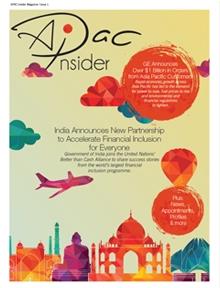
Asia Pacific Regulations Driving Innovation in Healthcare
Research and Markets has announced the release of the Asia-Pacific Regulations Driving Innovation in Healthcare report.
Government initiatives and incentives in APAC have resulted in increasing investment in research and development (R&D) in healthcare, while free trade economics across the region as well as emerging market growth have created the demand for pharmaceutical and medical device products. These trends have made APAC an attractive market that supports innovation while driving consumption, a paradigm shift to which market participants are adapting themselves by leveraging “Built-in-APAC” strategies.
Innovation is fundamental to the growth of the healthcare market. In recent years, many governments in the Asia-Pacific (APAC) region have rolled out favorable regulations to encourage innovation in the healthcare industry. This article examines two types of government regulations that can promote innovation in healthcare. First, the report discusses government initiatives in driving the growth of healthcare research and development (R&D) by highlighting those adopted in China, South Korea, Taiwan, and Singapore. These countries showcased the highest increase in R&D investments between 2009 and 2012. Second, by focusing on the Association of Southeast Asian Nations (ASEAN), it looks at policies that aim to enhance the delivery of and access to healthcare products and services.
Innovation in any industry, let alone healthcare, is improbable without investments in R&D. A minimum threshold of R&D is expected to drive healthy innovation across companies, countries, and regions. Not only does R&D investment fuel the development and growth of new products and technologies, it also sparks curiosity and enthusiasm, essential characteristics for a progressive and productive workforce. R&D expenditure is considered to be an essential criterion that reflects national development. It is influenced by a number of factors including political climate, fiscal policies, resource availability, and regulatory regimes.
Globally, there has been a decline in R&D spending, including in the healthcare industry. Even though healthcare has been more resilient on this front compared with other industries, this trend is expected to reverse with the growing need for improvements in cost and quality of care across almost all countries and regions over the next few years.
The significant drop in global healthcare R&D spending in 2009 was a result of the recession as well as cuts in healthcare expenditure across developed markets as part of austerity measures.
For more information visit http://www.researchandmarkets.com/research/f39jf4/asiapacific.





























